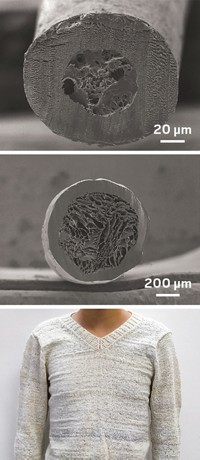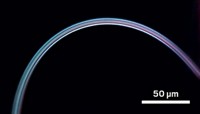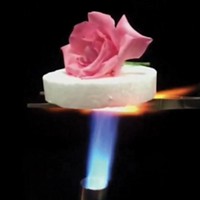Advertisement
Grab your lab coat. Let's get started
Welcome!
Welcome!
Create an account below to get 6 C&EN articles per month, receive newsletters and more - all free.
It seems this is your first time logging in online. Please enter the following information to continue.
As an ACS member you automatically get access to this site. All we need is few more details to create your reading experience.
Not you? Sign in with a different account.
Not you? Sign in with a different account.
ERROR 1
ERROR 1
ERROR 2
ERROR 2
ERROR 2
ERROR 2
ERROR 2
Password and Confirm password must match.
If you have an ACS member number, please enter it here so we can link this account to your membership. (optional)
ERROR 2
ACS values your privacy. By submitting your information, you are gaining access to C&EN and subscribing to our weekly newsletter. We use the information you provide to make your reading experience better, and we will never sell your data to third party members.
Nanomaterials
Polar bears inspire strong, elastic, heat-insulating aerogel
Made of hollow carbon tubes, the durable insulator outperforms most aerogels
by Prachi Patel, special to C&EN
June 9, 2019
| A version of this story appeared in
Volume 97, Issue 23

A polar bear’s shaggy coat provides exceptional defense against icy, Arctic conditions. Each hollow strand of fur traps heat, collectively forming a waterproof mat that keeps the animals warm and dry. Inspired by this structure, researchers have made a strong, insulating aerogel that is also elastic and waterproof (Chem 2019, DOI: 10.1016/j.chempr.2019.04.025). Materials that mimic polar bear hair could be used for thermal and sound insulation in buildings and airplanes, but they tend to be weak and not very pliable, limiting applications. So, Shu-Hong Yu, a chemist at the University of Science and Technology of China, turned to tough carbon tubes, which are thicker than common nanotubes. Working with Yong Ni, Jian-Wei Liu, and colleagues, Yu soaked 35 nm wide, 5 µm long tellurium nanowires in a glucose solution and heated them, creating a mesh of interconnected wires with a smooth carbon shell. The group then heated the material in an inert atmosphere to remove the nanowires, yielding a carbon-based aerogel. The product is lighter and traps heat better than most aerogels and commercial insulators, Yu says. It also bounces back and does not lose its insulating nature when squished more than 10,000 times to 10% of its volume. The team aims to cut production costs by finding an inexpensive substitute for the tellurium nanowire template.





Join the conversation
Contact the reporter
Submit a Letter to the Editor for publication
Engage with us on Twitter